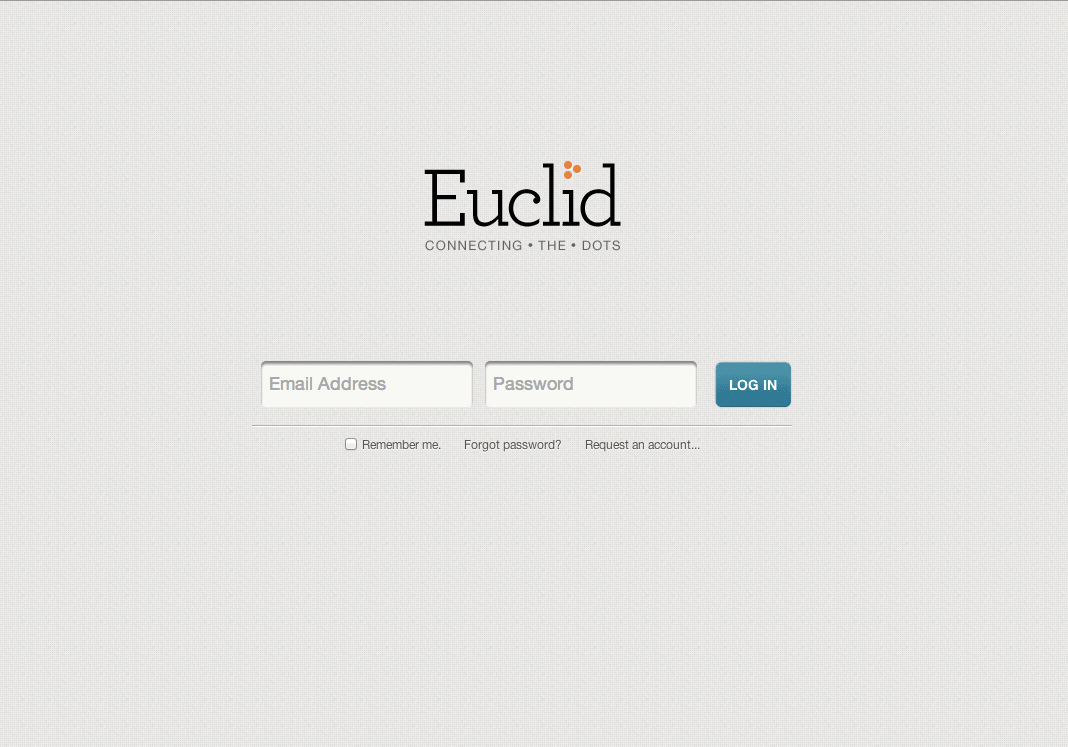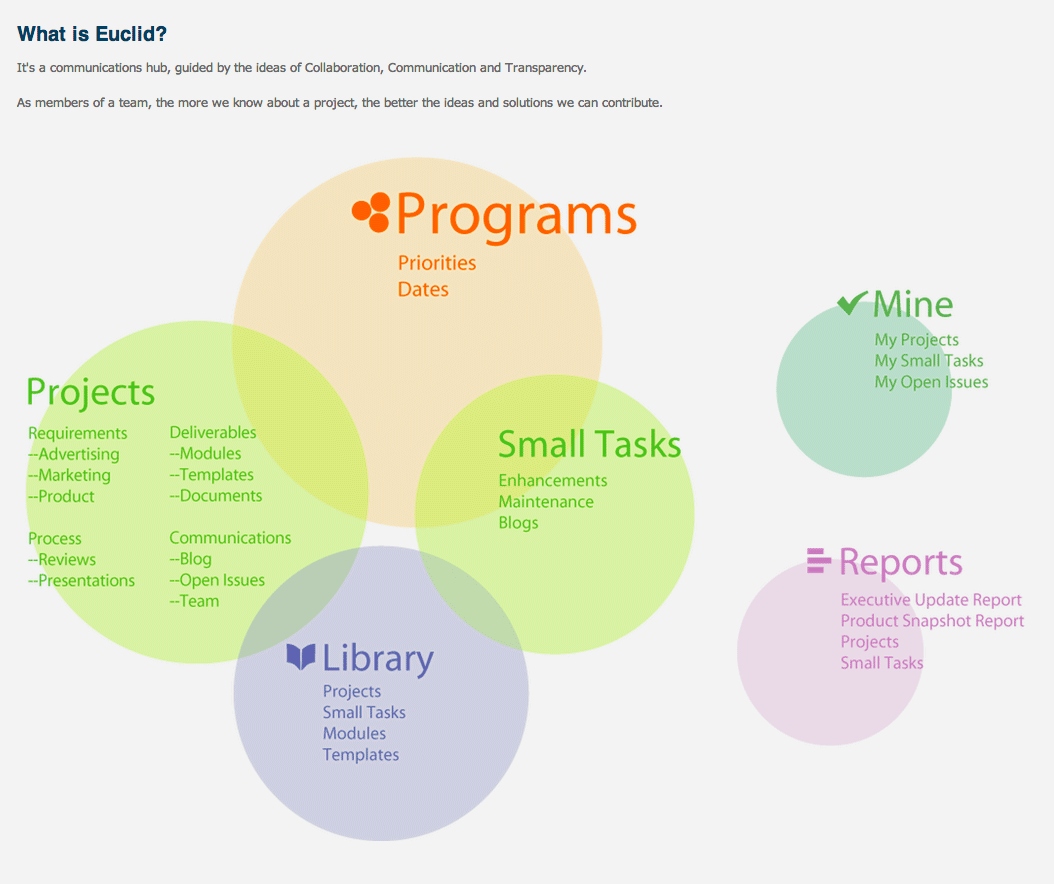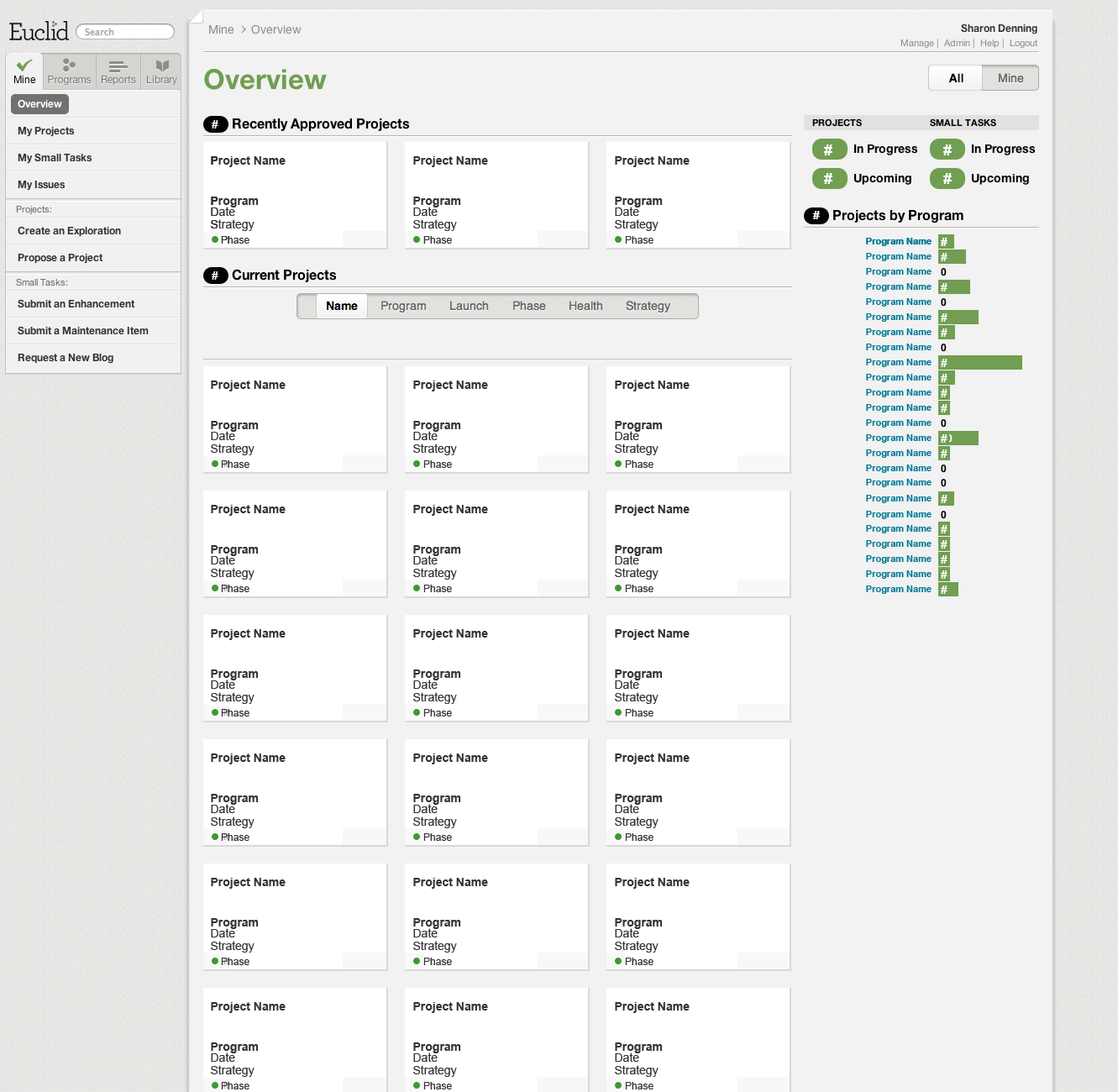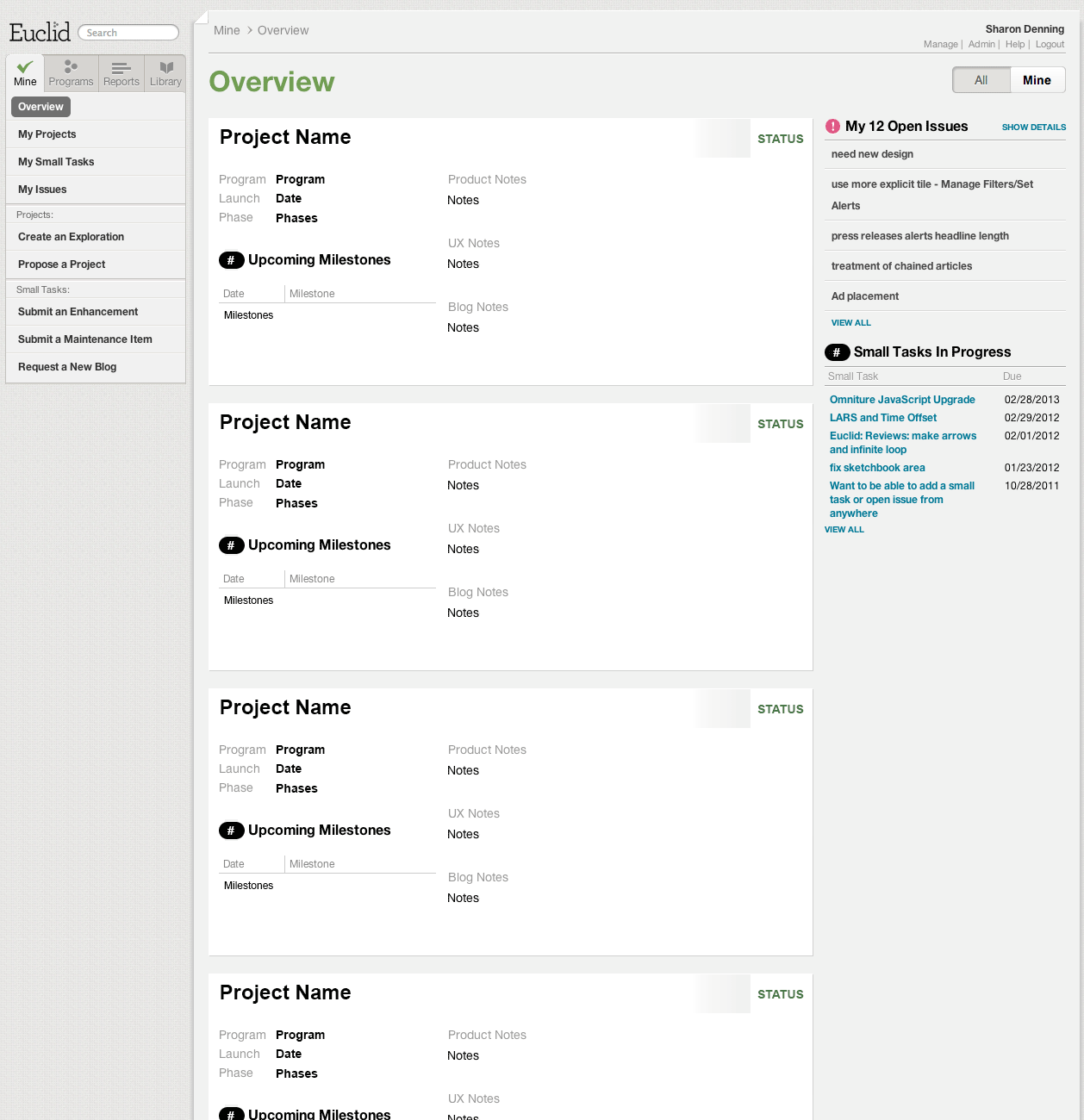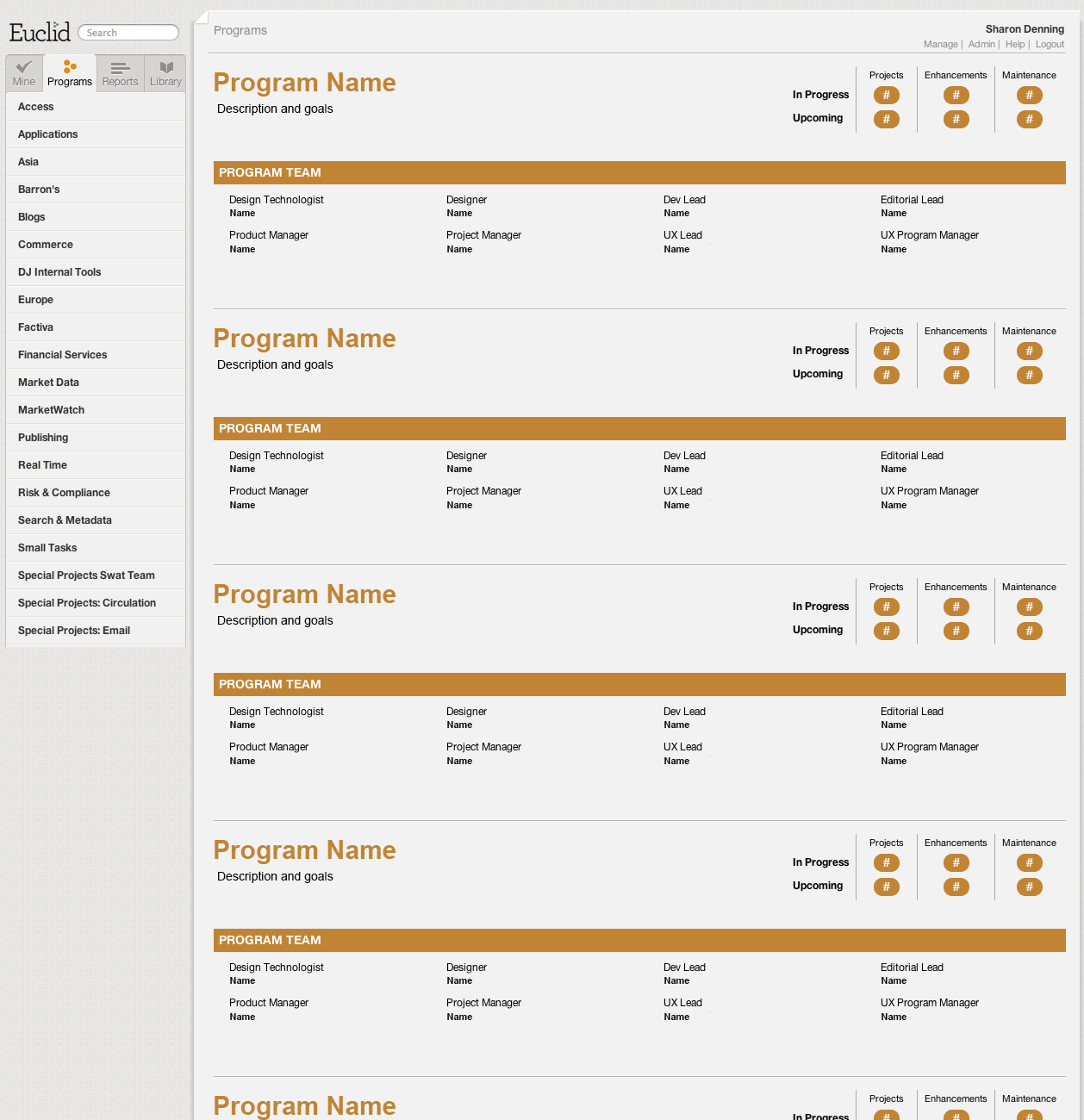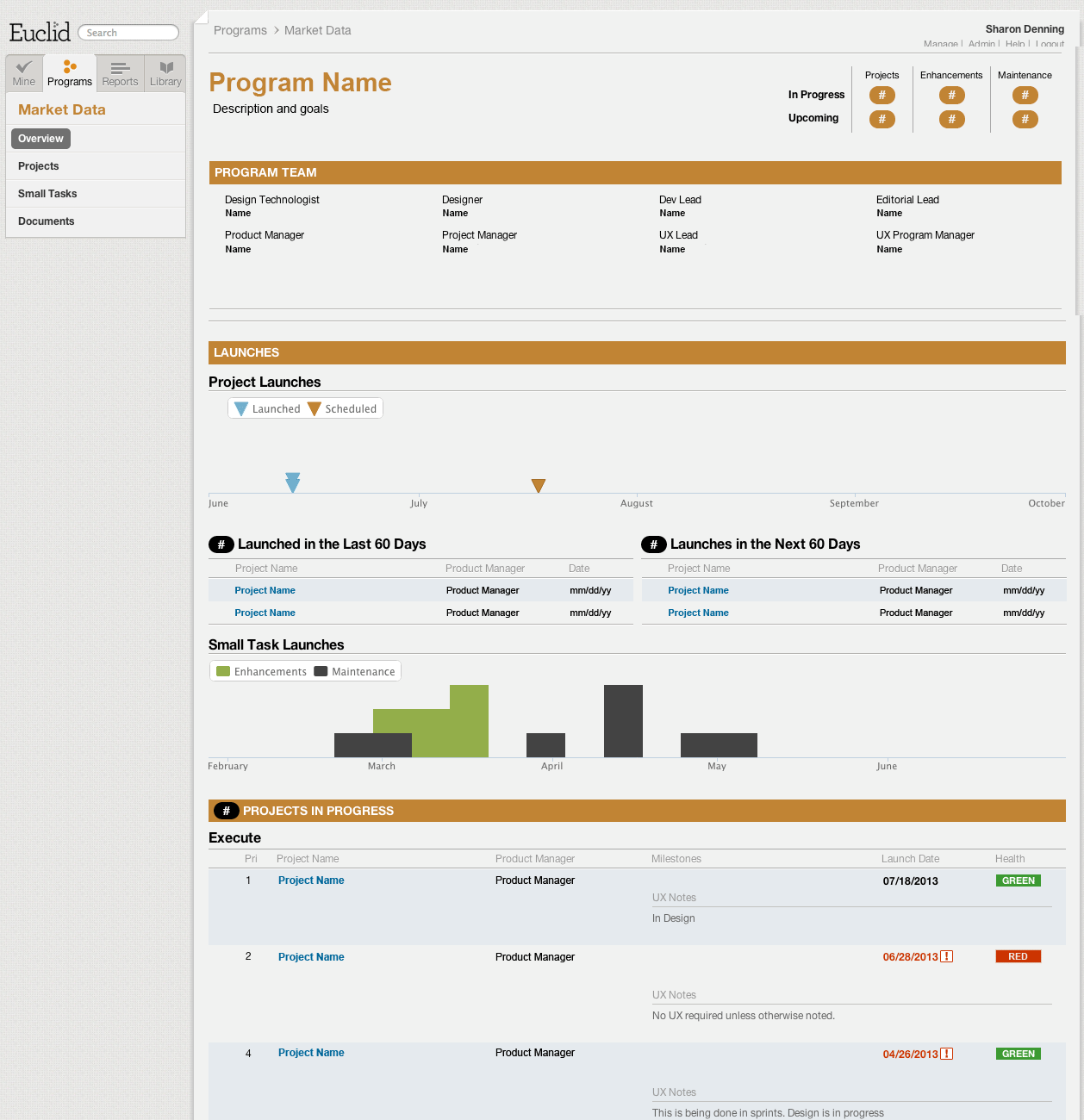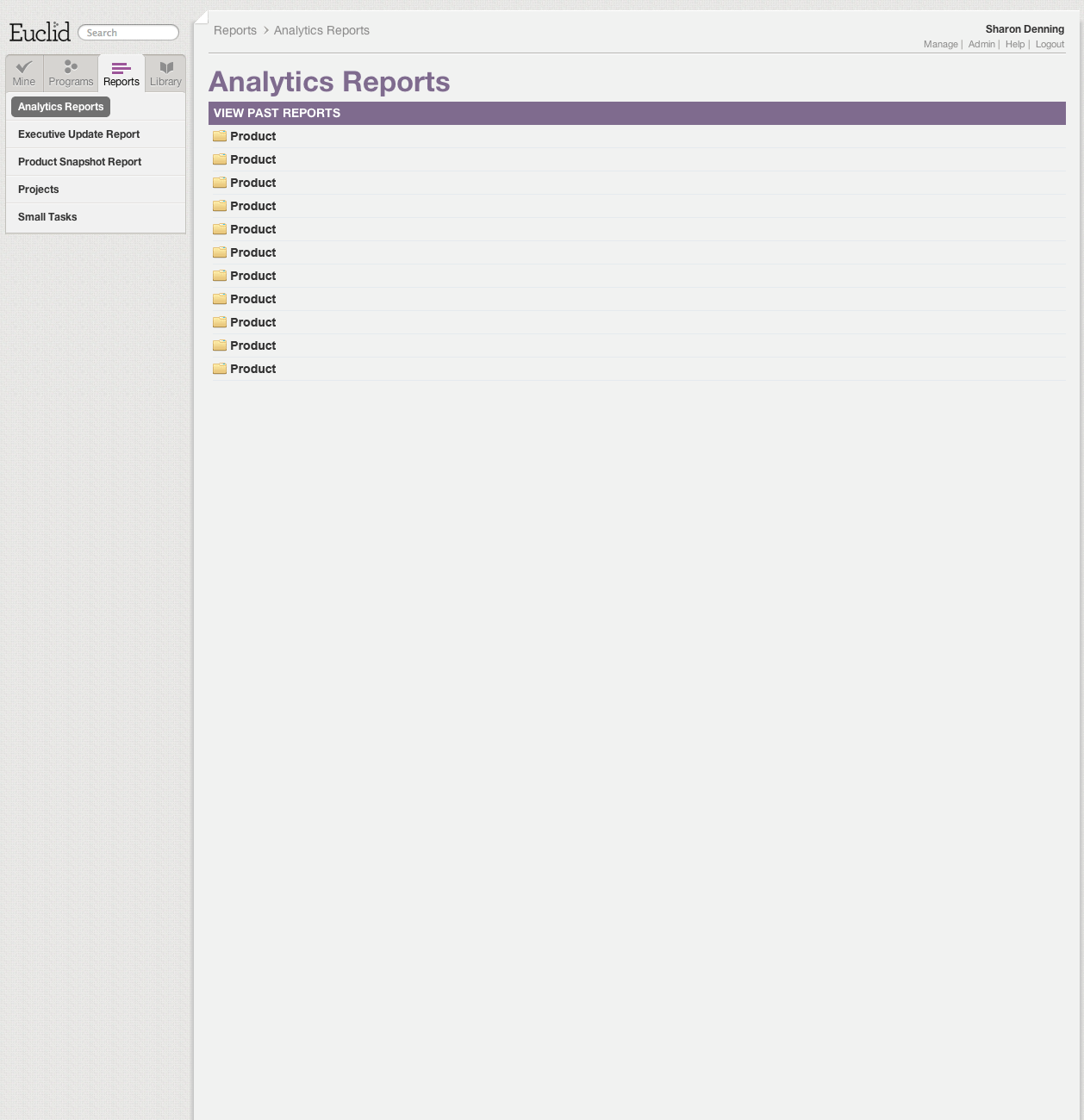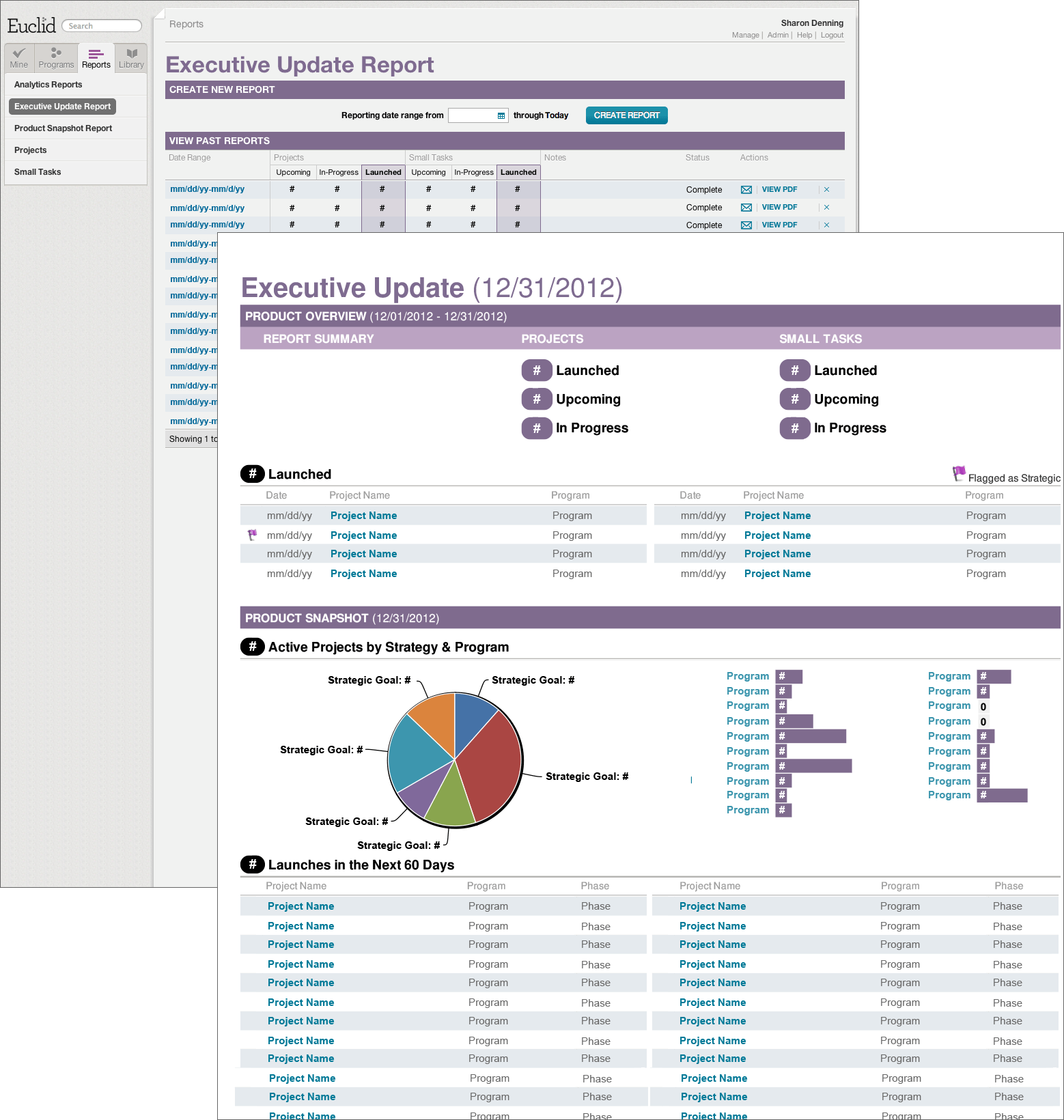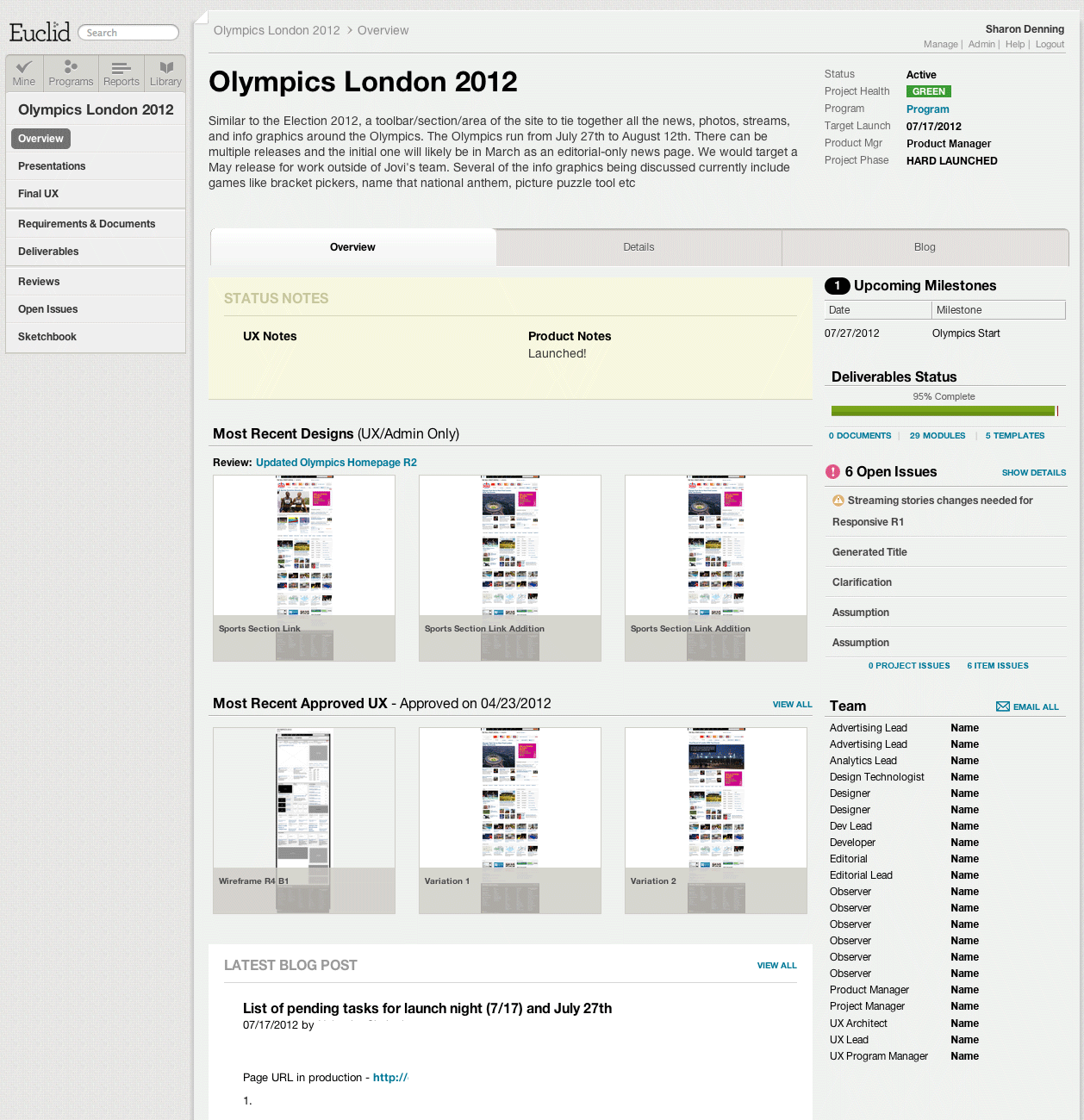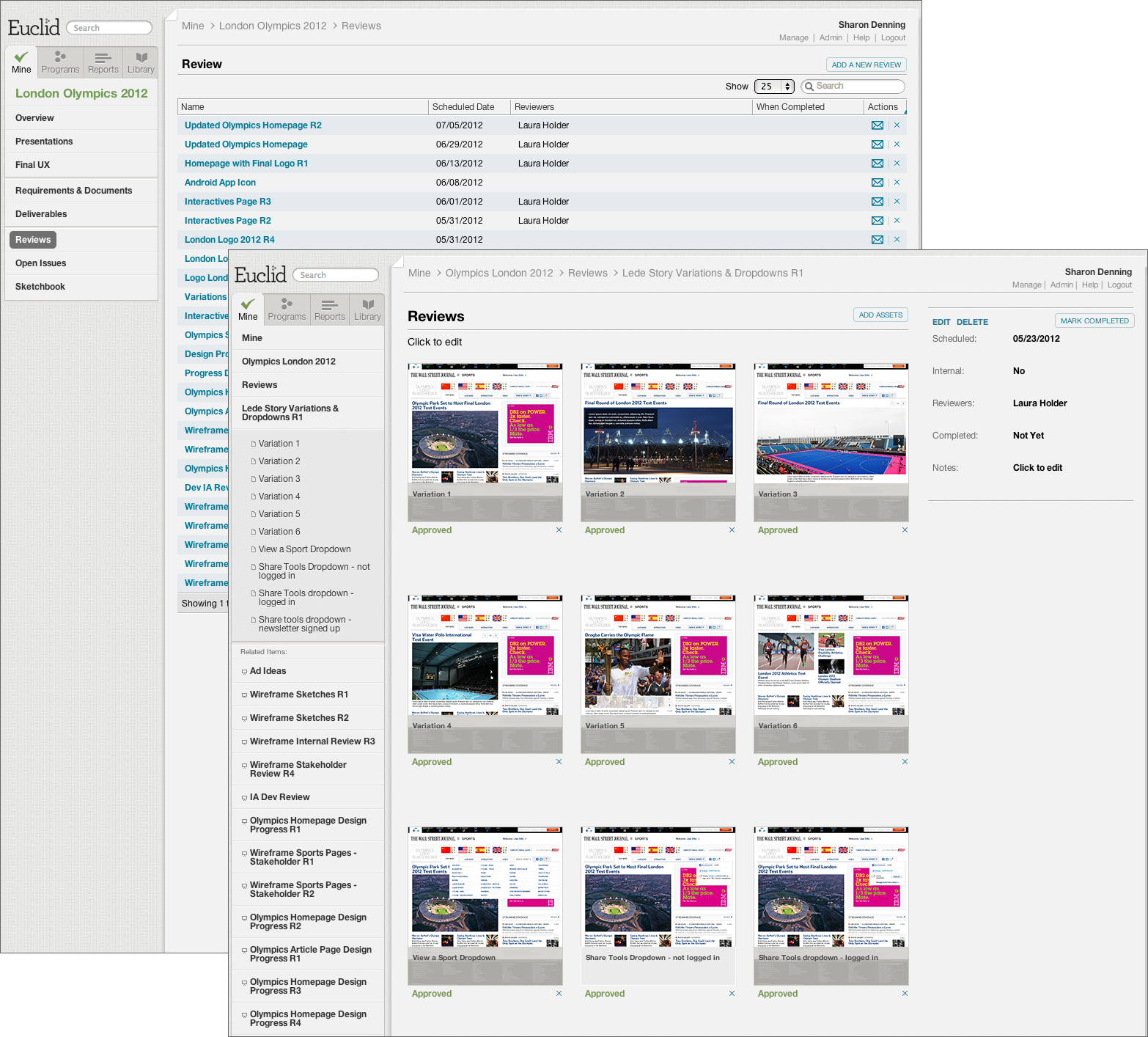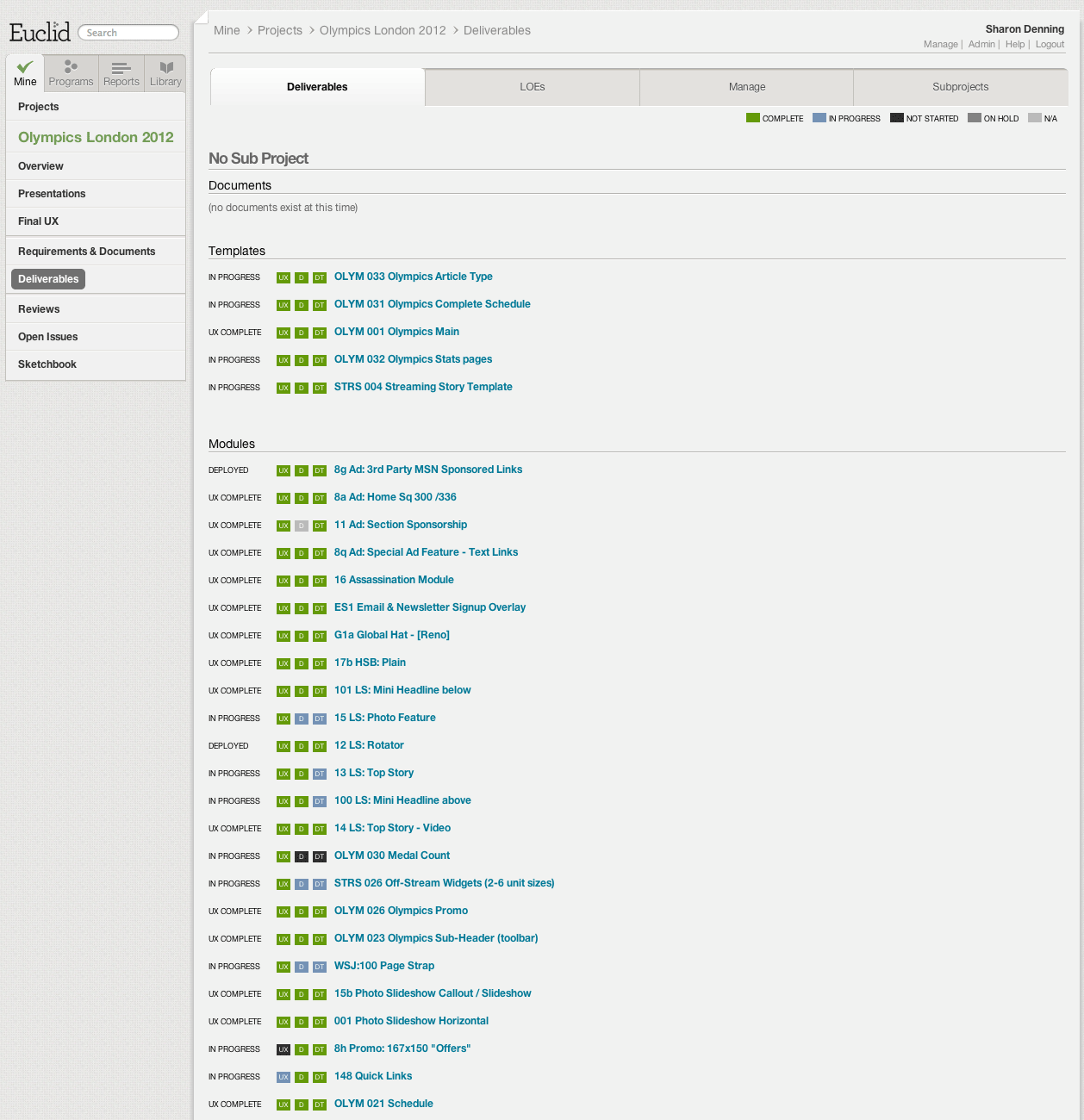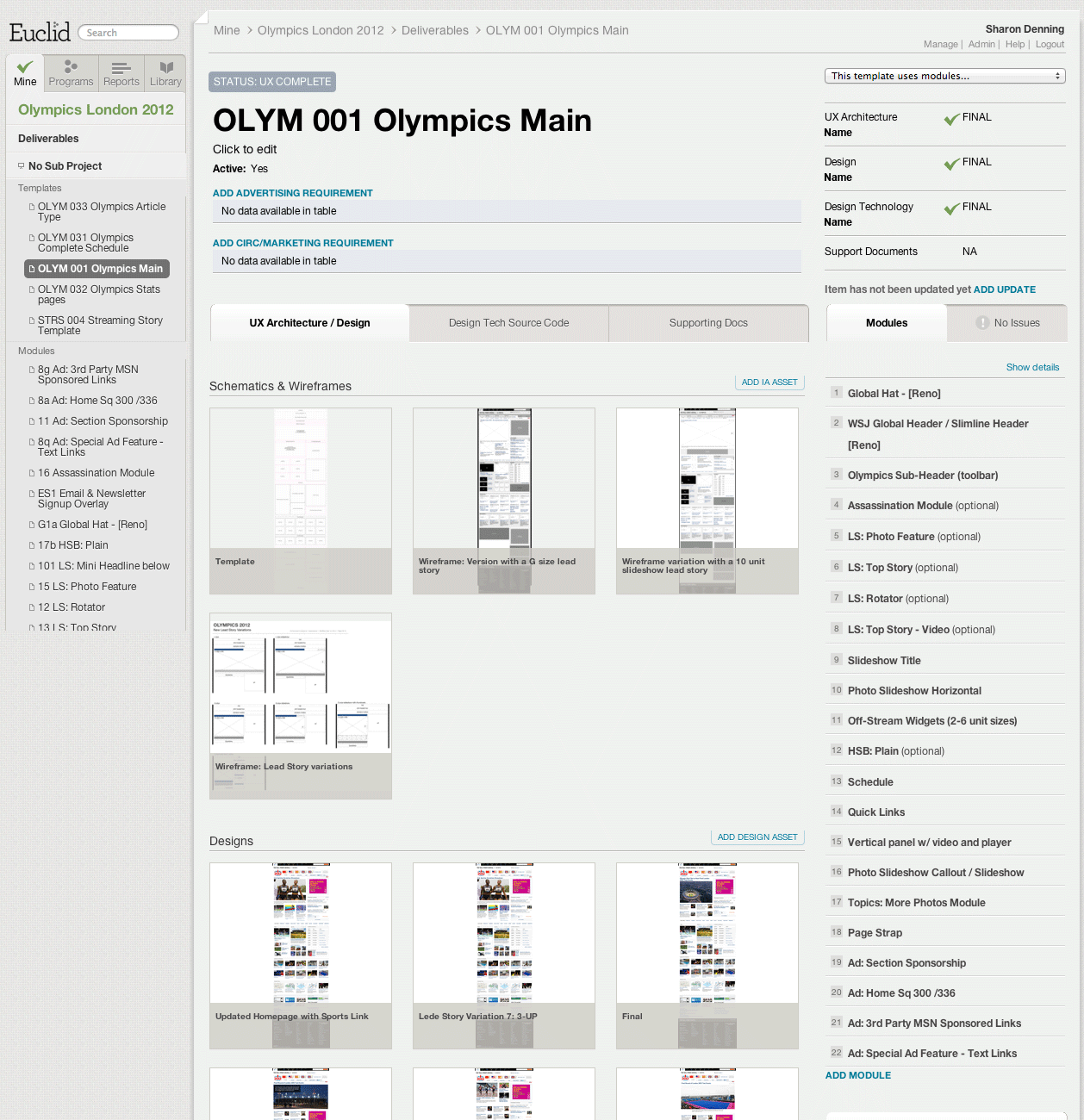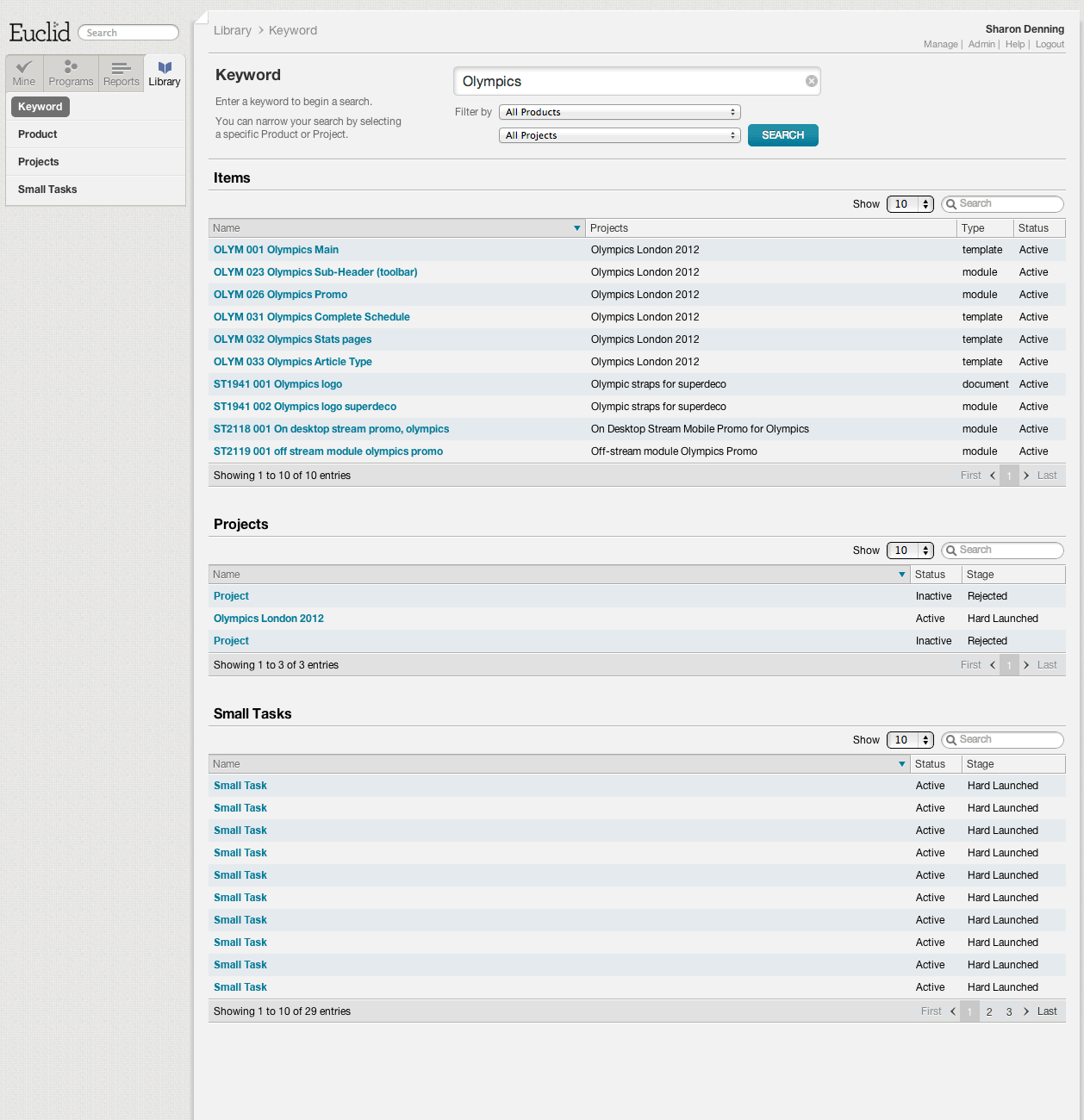Tools: Euclid
Euclid is a proprietary tool built for The Wall Street Journal to manage projects and their assets, from the initial Opportunity Assessment to the final CSS and HTML.
Originally built as a way to create living documentation for the UX team and to manage deliverables and reviews for the redesign of the Wall Street Journal in 2008, it was subsequently adopted by the larger company and funded for further development under my leadership.

Product and UX were able to manage and track projects across multiple properties and teams, and it served as a central repository for a library of reusable modules and templates used by the WSJDN Network. Maintaining the documentation online ensures that everyone always sees the latest version. It also makes it easy to update and reuse items across projects, maximizing team efficiency.
Euclid included sections for:
- Team Pages (Programs)
- Overview of Work by All Teams
- Individual Team Page
- Catalogue of Current Projects
- All Active Projects
- Projects for a single team member
- Reports
- Status and Analytics
- Projects
- Overview Page for an Individual Project
- Requirements
- Reviews
- All UX Deliverables and their status
- Library of Reusable Templates and Modules
- Individual Template or Module Pages
- Personal Page
- Projects, Small Tasks, and Open Issues for an individual
- Search
For Admins, Euclid provides an overview of all current work and a summary of projects by team and strategic initiative.
Individual users see details on their projects, as well as the open issues currently assigned to them.
The Programs page provides an overview of each team’s, or program’s, current work.
The page for an individual program includes their roadmap for the next 2 months, a breakdown of their small tasks work, and an overview of their active projects.
Data entered in Euclid for each individual project is pulled together to provide an overview of the entire department’s activity. Euclid is also used to store monthly, daily and hourly analytics reports for all properties.
Each project has its own main page, where team members can see the project schedule, status, open issues, and upcoming milestones. They can also follow its progress though a blog and highlighted uploads. Links on the left allow the user to quickly access the project’s presentations, final UX, requirements, deliverables, reviews, open issues, and sketchbook.
This area is the central repository for all requirements and support documents.
Reviews allow team members and stakeholders to see work in progress.
The UX deliverables page makes it easy to track the status of a module or template as it moves through IA, Design and Design Technology. It also provides Development with a quick list of links to each item, its CSS/XHTML and functional specs.
The page for each individual template or module includes a brief description, its current status and its owners.
All materials required by Development and QA are also included.
Maintaining the documentation online ensures that everyone always sees the latest version. It also makes it easy to update and reuse items across projects, maximizing team efficiency.
Search allows users to easily find current and archived projects, small tasks and deliverables.
